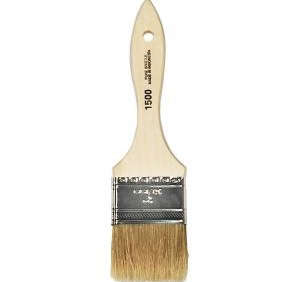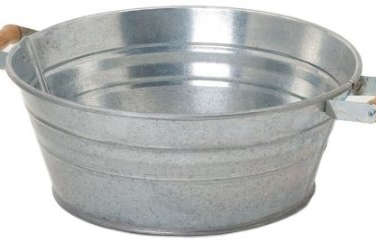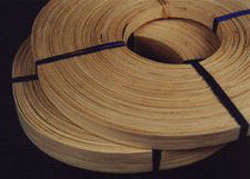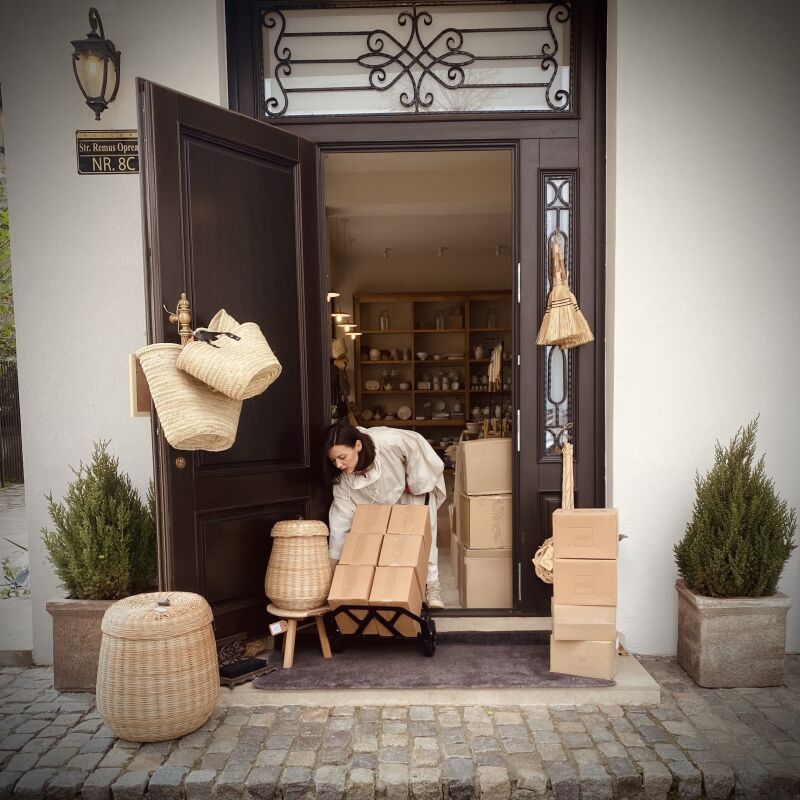I’ve been weaving fabric for some time, but it wasn’t until I took a course in basketry from a professional weaver from the Klamath River region that I understood how to weave with wood and reeds. Basketry is one of those skills that is best learned visually, so today, we’re offering a video guide to weaving your own basket.
If you happen to live in the San Francisco Bay Area, the best resource for basketry materials is The Caning Shop in Berkeley, where you’ll find ash wood of varying qualities, plus skilled artists who will recane your wicker chairs and more. You can weave this piece with ash strips (see measurements below) or a less-expensive Reed Splint as well. I chose to paint my basket black (inspired by Jonathan Kline’s Blackash Basket for March in SF) , but you can certainly stain it or paint it a different shade.
Want to give the project a try? See my DIY video for step-by-step instructions (you’ll need to source the materials outlined below).

Above: The finished basket painted in a black, high-gloss finish.

Above: The weaving process.

Above: A sharp pair of scissors is a necessity.
Here’s what you need:
- 28 strips of ash wood, measuring 24 inches long and a 1/2-inch wide.
- Four longer strips of ash, measuring 60 inches (or alternatively, eight 30-inch pieces).
- Ikebana Scissors ($31.95 from Amazon), or standard gardening shears.
- High Gloss Black Paint.
- Paint Brushes; $1.15 each at Home Depot.
- A Galvanized Tub for soaking the ash wood; $17.32 from Amazon.
Additional Instructions:
- Soak the strips of ash in a tub of water for about 10 minutes prior to weaving (note: soaking time may vary, depending on the quality of the wood).
- To start, line up five strips of ash wood in one direction, and weave over-under, one at a time, with another five strips (see the video above).
- Continue weaving in an even fashion until you have 14 strips lengthwise woven with 14 strips crosswise. My basket measured 14 inches before I began to turn up the sides; this should leave you with five inches of additional length on all four sides.
- Dip your basket in the water to keep it flexible as you continue weaving; you’ll need to keep the wood well-soaked (but not over-soaked) in order to turn up the sides.
- When you are ready to weave the edges, began to shape the wood by very gently folding it upwards. Take one of your four 60-inch strips and weave over-under around the edges. This is where you’ll want to tightly weave the ash together (as opposed to the open weave of the basket’s base).
- Keep turning and strongly manipulating your basket: this is the point when the project requires patience and perseverance.
- To finish the basket (this is my approach, but there are many different methods), tuck each excess strip under and trim with your scissors.
For more instructions and information on basketry, I recommend Willow Basketry for the Very Beginner ($19.65) and The Ultimate Basket Book ($19.95); both available through The Caning Shop and also through Amazon.
N.B.: Looking for more projects? See all of our DIY videos.









Have a Question or Comment About This Post?
Join the conversation (10)